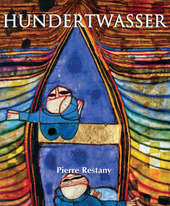
|
Hundertwasser
Hardback
Main Details
Description
Friedrich Stowasser (1928, Vienna-2000, New Zealand), better known by the name of Friedensreich Hundertwasser, was a painter, thinker, and architect, or rather a 'doctor of architecture,' as he declared in his manifesto of the 24th of January 1990. His architectural creations, organic and full of imagination, may have been influenced by the works of Antoni Gaudi. Yet, Hundertwasser was more radical in his philosophy. As expressed in his remarkable eco-artistic manifestos, and other achievements (paintings, posters, stamps, houses, and architectural designs), his message remains profoundly and viscerally ecological.His pictorial work is characterised by an organic abundance of forms and by the brilliance of its colours. Hundertwasser is an artist who is difficult to classify. With his tremendous love of nature, he is one of the pioneers of humanist and environmentalist architecture, which attempted to reconcile creativity and ecology. This vision has been shared by many young artists all over the world and by the founders of eco-villages.
Author Biography
Pierre Restany remains the most influential French art critic of the second half of the 20th century. A witness to the dynamic New York art scene, he founded, along with Yves Klein, the "New Realism," an artistic movement created in reaction to Pop Art, which expressed the distress of the post-war period. Always alert and on the lookout for new artistic creation, this eminent art critic became interested in Hundertwasser's fascinating work and ecological theory. They met on several occasions: in Paris in 1957, and also in Vienna, where they spent three days together. This text is an account of the encounters between two exalted giants of the artistic scene, as well as the homage of a critic to the great Austrian artist.
|